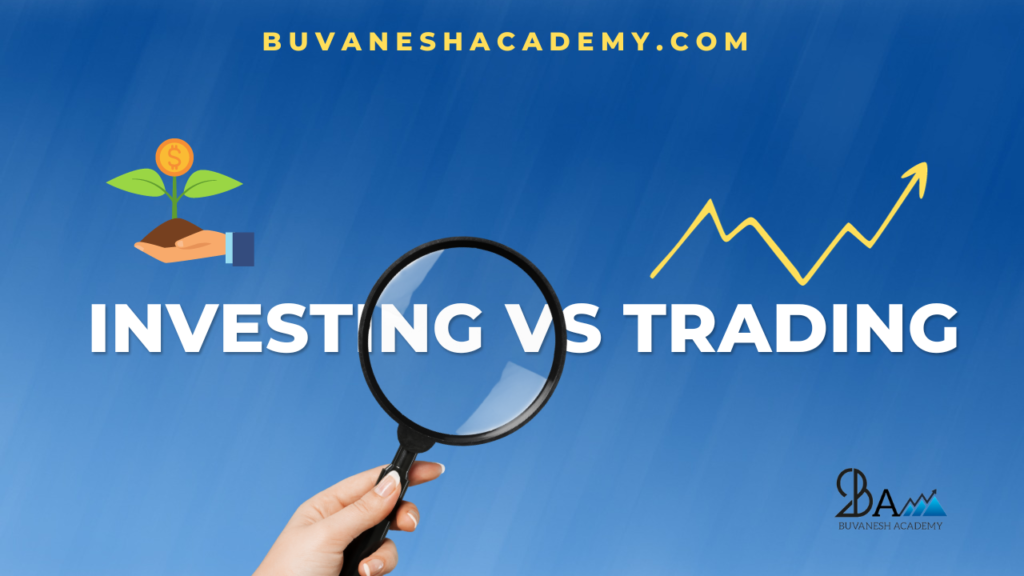
Introduction:
In the world of finance, two prominent strategies stand out: trading and investing. While both aim to grow wealth, they are fundamentally different approaches with unique characteristics, objectives, and time horizons. This article will delve into the key distinctions between trading and investing to help you make informed decisions about your financial future.
Trading:
Definition: Trading involves actively buying and selling financial assets, such as stocks, bonds, currencies, or commodities, with the goal of profiting from short-term price fluctuations.
Characteristics:
1. Short-Term Focus:
Traders seek to profit from rapid price movements, often holding assets for minutes, hours, or days.
2. High Frequency:
Frequent trades are common, and traders use technical analysis, charts, and indicators to make quick decisions.
3. Risk and Volatility:
Trading can be highly risky, as it involves speculating on short-term market movements, which can be unpredictable.
Objectives:
1. Capitalizing on Short-Term Opportunities:
Traders aim to profit from market inefficiencies and short-term trends.
2. Income Generation:
Some traders rely on trading as their primary source of income.
3. Risk Management:
Traders often employ risk management strategies, such as stop-loss orders, to limit potential losses.
Investing:
Definition: Investing is a long-term strategy focused on purchasing assets with the expectation that they will appreciate over an extended period, typically years or decades.
Characteristics:
1. Long-Term Horizon:
Investors hold assets for the long run, allowing them to benefit from compounding and economic growth.
2. Fundamental Analysis:
Investors analyze the underlying value of assets, including factors like company financials and market trends.
3. Lower Frequency:
Investments are not actively traded, reducing transaction costs and taxes.
Objectives:
1. Wealth Accumulation:
Investors seek to build wealth over time, often for retirement, education, or major life events.
2. Income and Dividends:
Many investments, such as stocks and bonds, provide income through dividends and interest payments.
3. Risk Diversification:
Diversifying across different asset classes reduces risk and enhances long-term stability.
Key Differences:
- Time Horizon: The primary distinction is the time frame. Trading is short-term, while investing is long-term.
- Risk Tolerance: Trading carries higher risk due to its short-term nature, while investing allows for more stability and risk management.
- Approach: Traders use technical analysis, while investors focus on fundamental analysis.
- Frequency: Traders make frequent transactions, while investors hold assets for an extended period.
- Goals: Traders aim for short-term gains, whereas investors seek long-term wealth
Conclusion:
In summary, trading and investing represent contrasting approaches to wealth management. The choice between them depends on your financial goals, risk tolerance, and time horizon. While trading can offer quick profits, it comes with higher risks, whereas investing provides a more stable path to long-term financial security. A well-balanced portfolio may include elements of both strategies, tailored to your specific circumstances and objectives.


